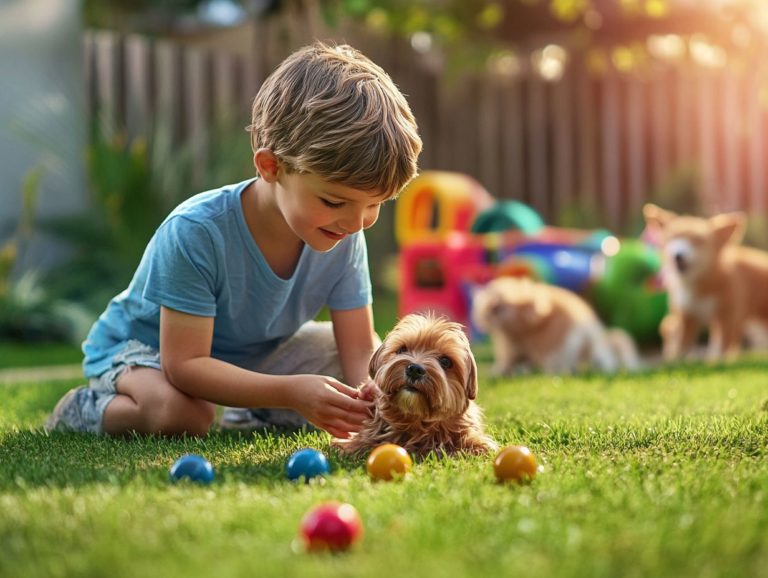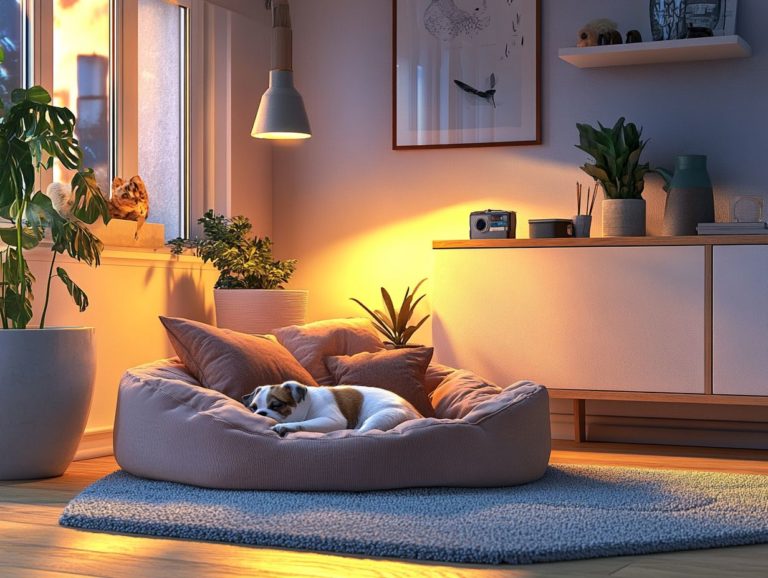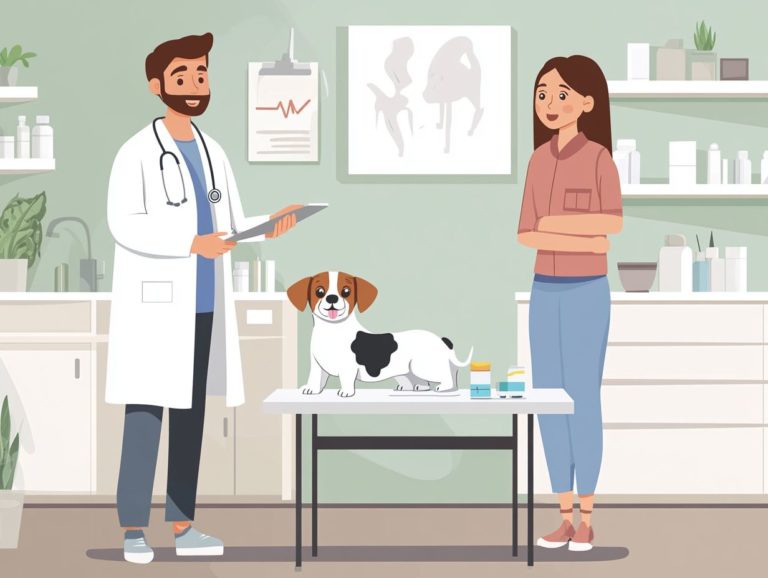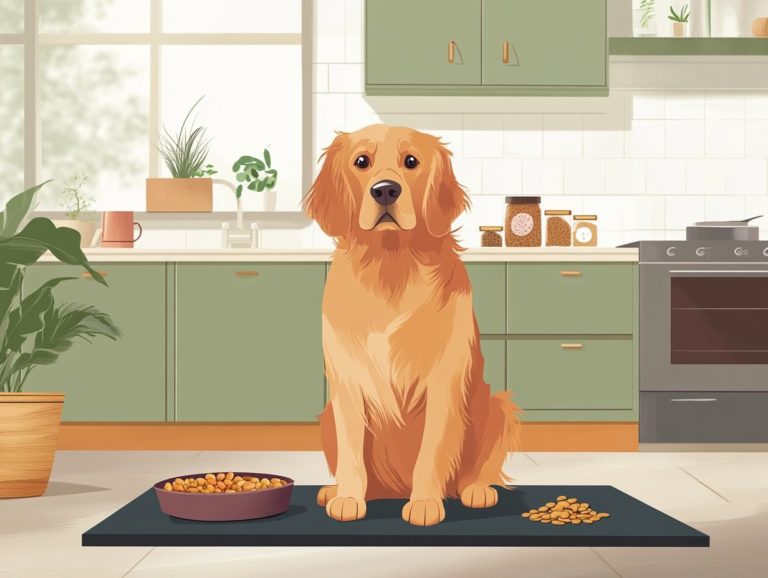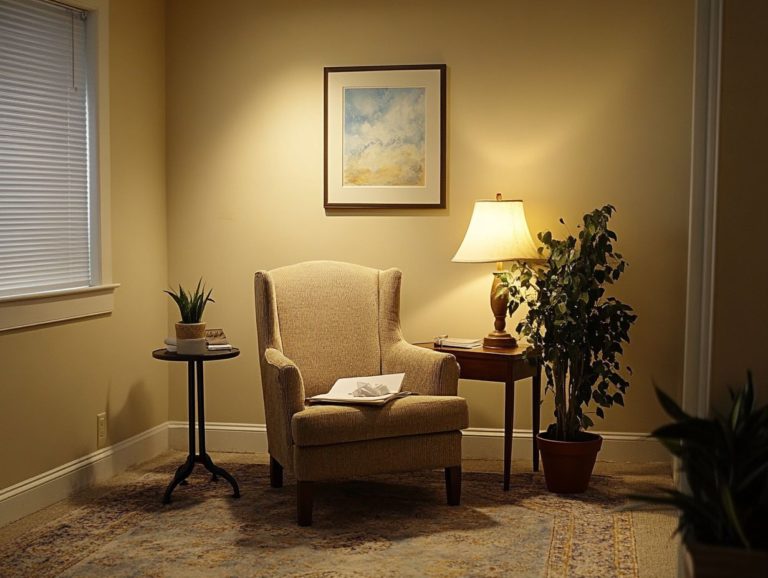How Important is a Calm Owner for Anxious Pets?
The bond you share with your pet is truly profound, yet your own anxiety can significantly impact your furry companion’s well-being.
This article delves into the signs of anxiety in pets, highlighting the behavioral and physical symptoms you should be mindful of. You ll discover how maintaining a calm demeanor can create a more relaxed environment for both you and your pet.
The article also includes practical strategies to help you manage your emotions, along with insights into professional support options available for anxious pets.
Explore how cultivating tranquility can enhance the well-being of both you and your cherished animal. Don’t wait recognizing the signs of anxiety in your pet can make all the difference!
Contents
- Key Takeaways:
- The Impact of an Anxious Owner on Pets
- Signs of Anxiety in Pets
- How an Owner’s Calmness Can Help
- Tips for Staying Calm Around Anxious Pets
- Additional Support for Anxious Pets
- Frequently Asked Questions
- How important is a calm owner for anxious pets?
- What effect does an anxious owner have on their pet?
- Can a calm owner help ease their pet’s anxiety?
- How can a calm owner help prevent their pet’s anxiety, particularly in anxious dogs?
- What should an owner do if their pet is showing signs of anxiety?
- How can an owner maintain their own calmness when dealing with an anxious pet?
Key Takeaways:
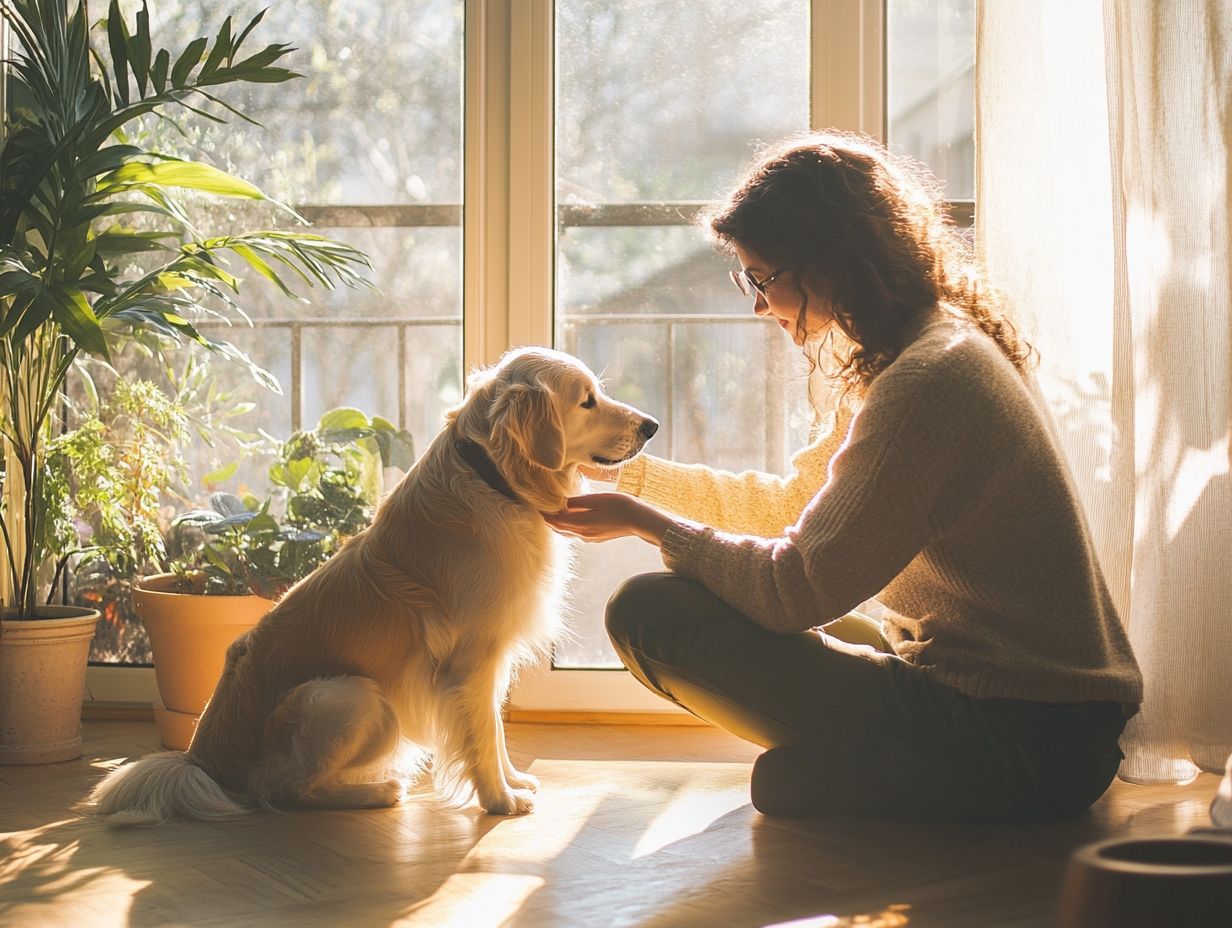
- A calm owner greatly impacts an anxious pet’s well-being.
- The bond between you and your pet is crucial for understanding their anxiety.
- Strategies and professional help can support both you and your pet.
The Impact of an Anxious Owner on Pets
An anxious owner can profoundly influence their pets’ behavior and emotional well-being, creating a ripple effect in the human-animal bond. Dr. Hal Herzog, a noted expert in psychology, points out that your emotional stability often dictates the behavioral health of your pets. Learning how to encourage calm behavior in anxious pets can greatly improve this dynamic.
When you exhibit anxiety, it can elevate stress levels in your dogs, leading to behavioral issues that complicate the joys of pet ownership. Understanding the needs of anxious pets is essential for building a better relationship with your pet, as it underscores the significance of emotional health and family bonds in your journey as a pet owner.
Understanding the Human-Animal Bond
The human-animal bond is a remarkable connection that profoundly influences both you and your pet, characterized by emotional support and mutual benefits. This bond transcends mere companionship, embodying deep relationships that enhance the emotional well-being of both parties involved.
When you welcome an animal into your life, you often undergo a transformation in your emotional landscape. Pets become a source of comfort during challenging times, offering companionship that alleviates feelings of loneliness and anxiety.
Research shows that interactions with animals can lower your stress levels, encouraging the release of oxytocin, a hormone that helps create feelings of love and connection. The responsibilities of pet ownership instill a sense of purpose and routine, which significantly contributes to your overall mental health.
This unique interplay enriches your life while creating a nurturing environment where both you and your pet can thrive emotionally.
Signs of Anxiety in Pets
Recognizing the signs of anxiety in your pets is essential for effective management and timely intervention. Anxious dogs often display specific behavioral issues that arise from emotional instability.
These signs can vary from subtle shifts in behavior to more pronounced distress, underscoring the necessity of understanding and addressing pet anxiety. By doing so, you can significantly enhance their quality of life.
Behavioral and Physical Symptoms
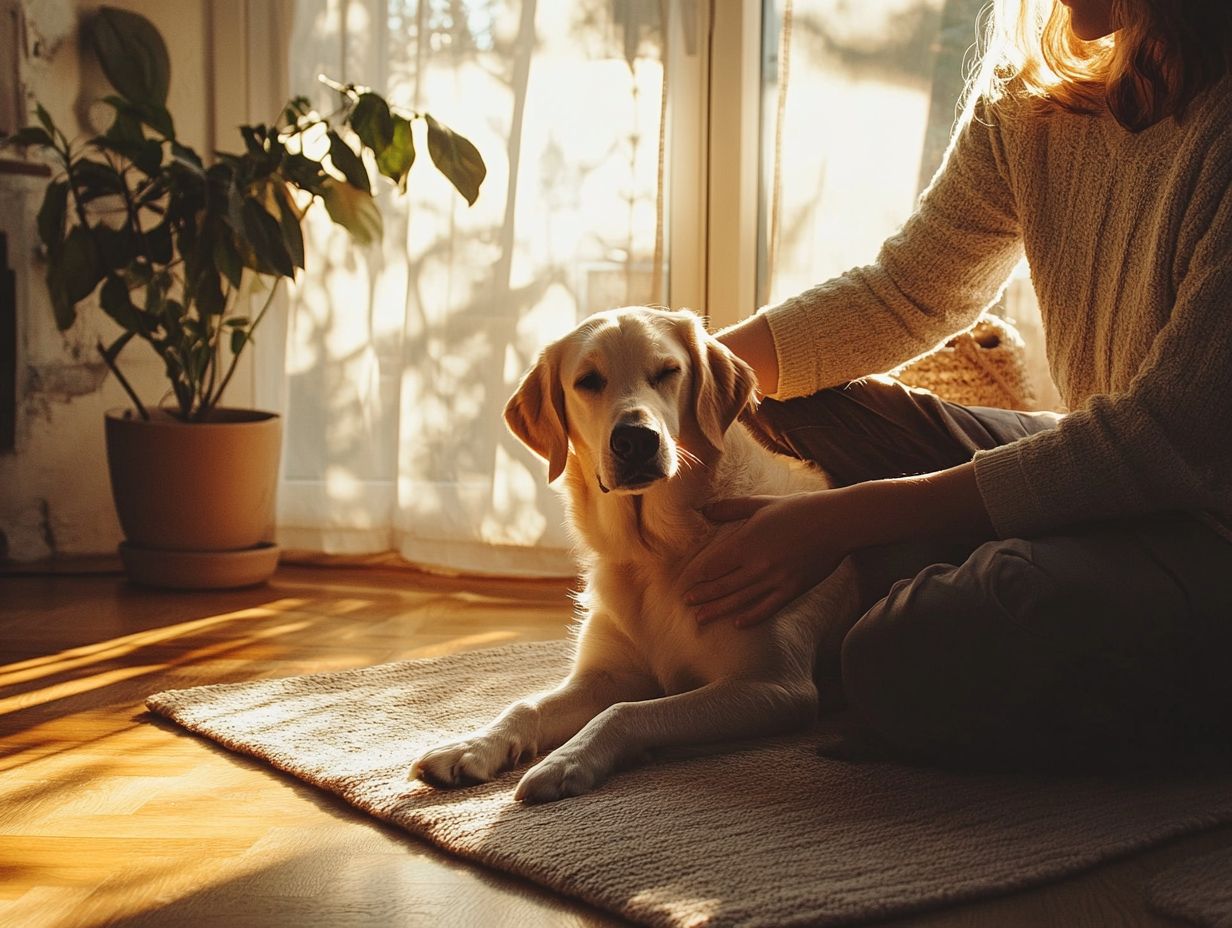
Behavioral and physical symptoms of anxiety in dogs can take many forms, from excessive barking and destructive behavior to signs of physical distress like panting or trembling. Recognizing these symptoms is vital for you to implement effective training and anxiety reduction strategies.
For instance, if your dog is clingy, you might notice it following you around the house, desperately seeking reassurance. Similarly, behaviors like pacing or hiding can signal discomfort in certain environments. Physical symptoms such as drooling or changes in appetite can reveal deeper issues as well. By identifying these behaviors, you not only address your dog s immediate needs but also create a more supportive atmosphere for them.
Taking timely action can involve adjusting routines, employing behavior modification techniques, or even consulting a veterinarian for advice on calming aids. By observing and understanding these signs, you play a crucial role in promoting a happier, healthier life for your anxious dog.
Take the first step to a calmer life for both you and your pet today!
How an Owner’s Calmness Can Help
Your calmness can significantly reduce stress and anxiety in your pets, highlighting the importance of patience in training anxious pets and creating a nurturing environment that promotes emotional stability.
Research indicates that maintaining a tranquil demeanor positively influences your dog’s behavior, enriching the quality of your interactions with them.
Reducing Stress and Anxiety in Pets
Reducing stress and anxiety in your pets starts with crafting a calming environment that nurtures resilience while addressing any behavioral challenges. You can use effective strategies like structured routines, environmental enrichment, and how to communicate with an anxious pet for support.
Creating a soothing space filled with soft bedding, familiar toys, and gentle music can significantly alleviate your pet’s anxiety. Regular exercise keeps your furry friend physically fit and promotes mental stimulation, further helping to reduce stress.
Consider introducing natural calming aids such as pheromone diffusers or anxiety wraps, which can offer comfort during stressful moments. Establishing predictable feeding and playtimes fosters a sense of security, allowing your pets to feel safe and relaxed in their surroundings.
Tips for Staying Calm Around Anxious Pets
Remaining calm around anxious pets is crucial for establishing a secure and stable environment. Implementing strategies to create a calm environment for anxious pets can greatly assist in managing their emotions.
By employing techniques designed to enhance emotional stability, you can effectively reduce your pet’s anxiety and create a healthier atmosphere for both you and your furry companion.
Practical Strategies for Managing Emotions
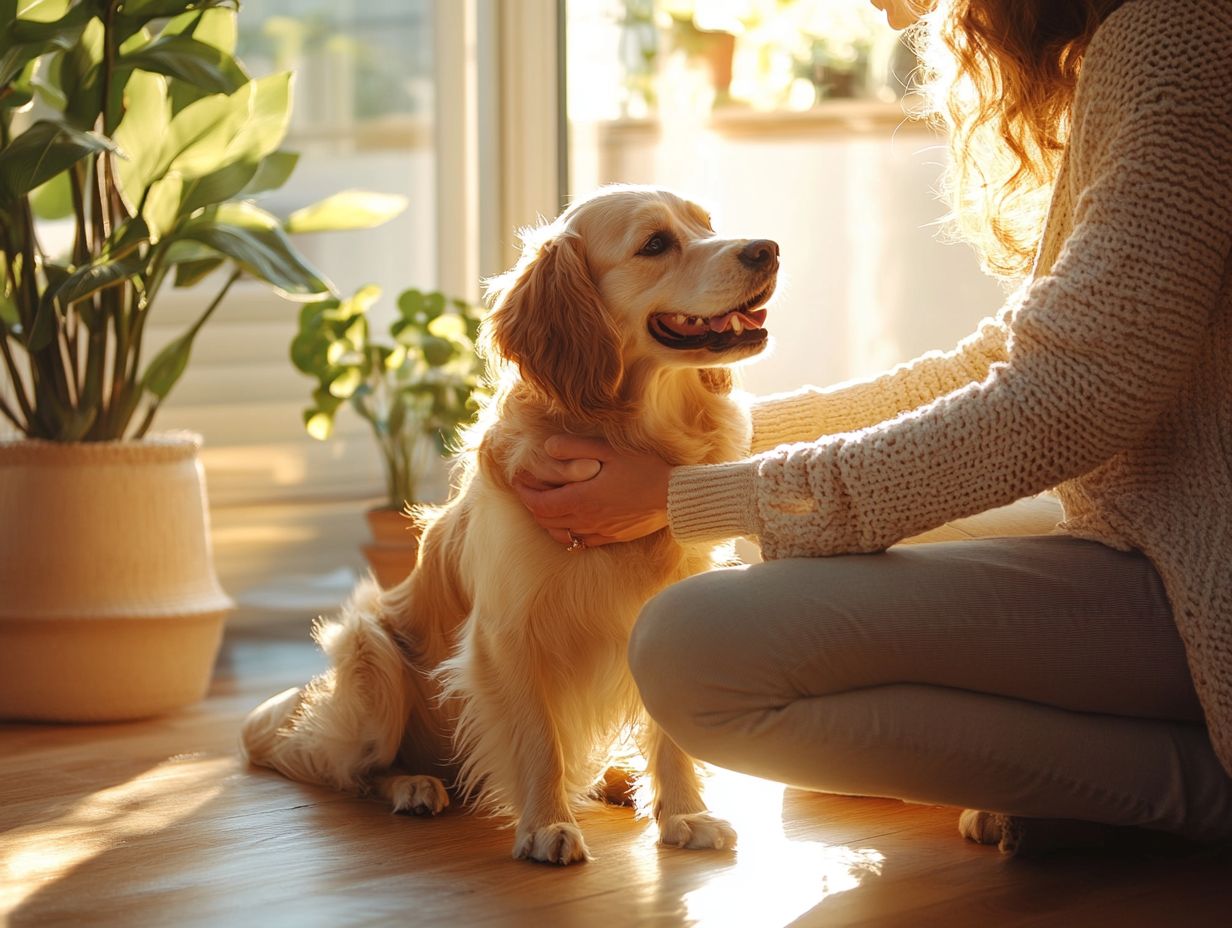
Strategies for managing emotions around anxious pets include using anxiety vests, probiotics, and creating a calming environment to provide emotional support. These tools can significantly enhance the emotional well-being of both you and your furry friend.
Using anxiety vests can help your pet feel more secure. These garments gently apply pressure, mimicking the comforting sensation of being held, which can lead to decreased anxiety during stressful situations like thunderstorms or fireworks.
Incorporating probiotics into your pet’s diet promotes digestive health, which is closely linked to their overall mood. Establishing a calming atmosphere complete with soft music, dim lighting, and safe spaces can further alleviate stress for both you and your pet.
Together, these interventions foster peace and deepen the bond between you and your beloved companion.
Additional Support for Anxious Pets
If you re looking for extra support for your anxious pets, consider enlisting professional help. This can include veterinary behavior specialists and therapy dogs, both of which offer invaluable emotional assistance.
These resources can significantly enhance the health and well-being of both your pets and yourself.
Professional Help and Resources
Resources for managing anxious pets can include consultations with veterinary behaviorists, access to peer-reviewed studies from the NIH, and support from animal welfare organizations. These resources provide essential guidance and strategies to enhance the emotional stability of both you and your pets.
Addressing pet anxiety benefits not just the animals but creates a healthier atmosphere for everyone in the household. Collaborating with trained professionals can offer insights into effective techniques, such as changing how pets act to reduce anxiety.
Engaging with local animal welfare organizations connects you with community support groups, providing a platform to share experiences and receive encouragement. Balancing expert advice with community support enhances the overall well-being of your furry family members, ensuring their lives are more enjoyable and less stressful.
Frequently Asked Questions
What are some signs that my pet is anxious? Look for behaviors such as excessive barking, hiding, or destructive actions.
How can I help my pet during fireworks? Create a safe space for your pet with familiar items and consider using anxiety wraps.
When should I seek professional help for my pet? If your pet s anxiety persists or worsens, consulting a veterinary behaviorist is recommended.
What types of calming aids are available? Options include pheromone diffusers, anxiety wraps, and natural supplements.
Act now to ease your pet s anxiety! Implement these strategies and consider professional support to create a calm environment for your furry friend.
How important is a calm owner for anxious pets?
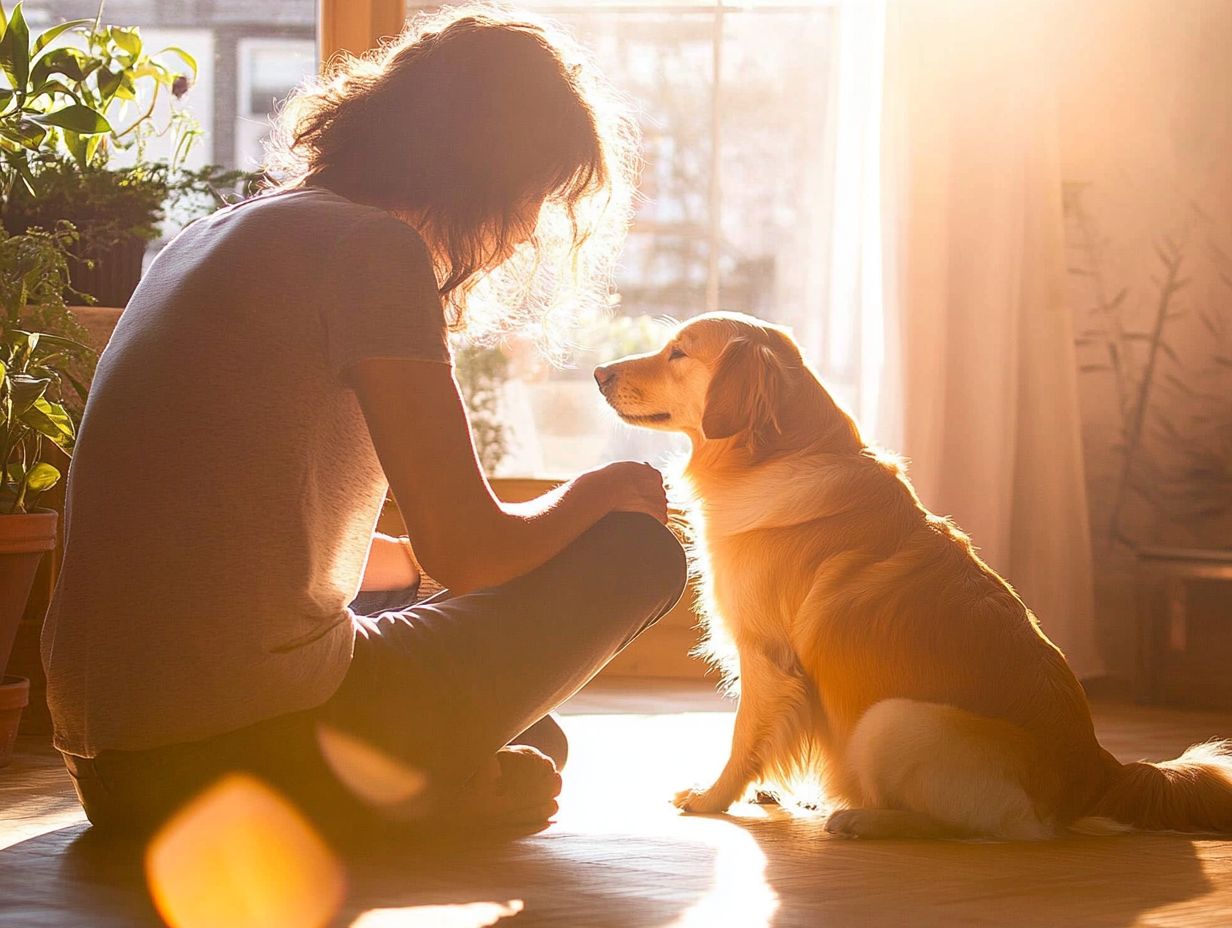
A calm and composed owner is very important for anxious pets. They look to their owners for guidance and reassurance. Understanding how significant the owner’s role is in pet anxiety can help ensure that if an owner is anxious or stressed, it doesn’t worsen their pet’s anxiety.
What effect does an anxious owner have on their pet?
An anxious owner can negatively affect their pet’s behavior and how they feel. Pets can pick up on their owner’s energy, which may lead them to become more anxious and stressed. Understanding the importance of mental stimulation for anxious pets can help mitigate this issue.
Can a calm owner help ease their pet’s anxiety?
A calm owner plays a crucial role in easing their pet’s anxiety. By remaining calm and providing a safe and secure environment, the owner helps their pet feel more at ease, highlighting the importance of calm spaces for anxious pets.
How can a calm owner help prevent their pet’s anxiety, particularly in anxious dogs?
A calm owner can prevent their pet’s anxiety by creating a consistent routine and providing mental and physical stimulation. This includes activities like playtime and exercise. Additionally, fostering a positive environment for anxious pets by being aware of their triggers and maintaining a stable atmosphere also plays a key role.
What should an owner do if their pet is showing signs of anxiety?
If your pet shows signs of anxiety, act quickly. Stay calm and provide a safe space for them. It’s a great idea to consult with a veterinarian or a professional trainer for guidance on helping your pet cope with anxiety.
How can an owner maintain their own calmness when dealing with an anxious pet?
Taking deep breaths and practicing mindfulness can help an owner remain calm when dealing with an anxious pet. To achieve a non-anxious pet, having a positive and patient mindset is essential. Seeking support from a therapist or joining a pet support group can benefit both the owner and their pet.


